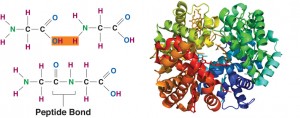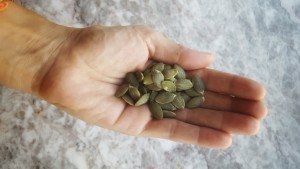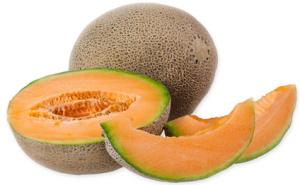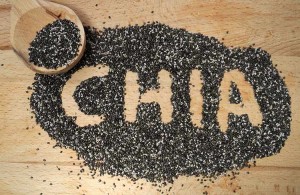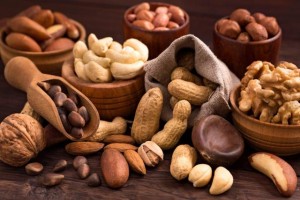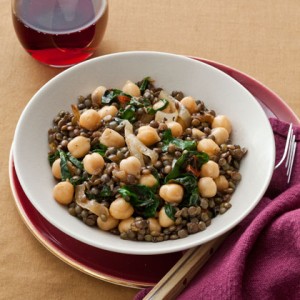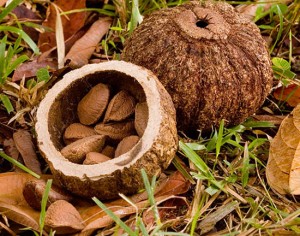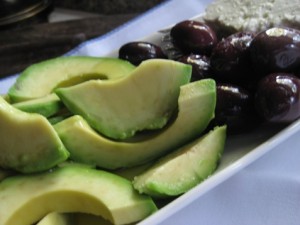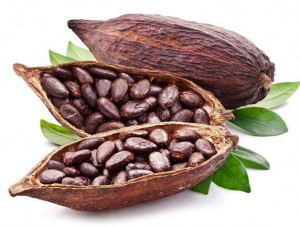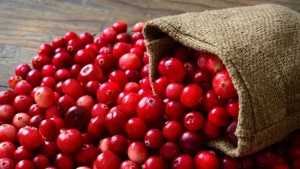As many of you are aware, I have been a vegetarian, sometimes pescatarian since I was 15 years of age. Recently, my husband and I adopted a vegan diet and this has raised some concerns with friends and colleagues in our very meat based country of Macau. Although there is a growing movement in the USA[1], UK[2], Australia and Canada[3], curious non-vegans are still intimidated by what they feel is too restrictive a diet that could challenge and hinder their nutritional intake. Do vegans really get what they need through a plant based diet? This series of articles will undertake to address the concerns of vegans/curious onlookers regarding commonly misunderstood dietary requirements and also suggest plant based sources to assist you in developing a balanced plant based diet (even if you only try it once a week!).
Protein and Amino Acids
This is always the first ‘food group’ that non-vegans question vegans about. In reality, using the word ‘protein’ is a misnomer. Protein(s) are not a single substance. On a molecular level, they come in many different shapes, sizes and types and each one has a unique job in the body of an organism. One cell in your body can contain thousands of proteins, each with a unique function.
All proteins are constructed from one or more chains of amino acids. These chains are referred to in science as polypeptides. In the human body, these amino acids are divided into essential, semi-essential and non-essential. Whereas the non-essential are produced by the body, generally as bi-products to cellular/metabolic function, it is the essential and semi-essential amino acids that must be sourced externally and consumed. Of the approximately 20 amino acids commonly found in proteins, only 8 of these are regarded as essential and 2 as semi-essential.
A balance of amino acids should be ingested on a daily basis and as with all things dietary, the amount required depends on the individual. For a full health assessment in this regard, I would suggest consulting a degree holding nutritionist or dietitian in your region.
Please note: although I mention spirulina as a source of many of these amino acids, please first read my article here about the benefits and contraindications of this product.
The Semi – Essential Amino Acids – Functions and Sources
Arginine: high levels are required particularly during adolescence and childhood as the body can rarely produce the level required at these stages in life when growth hormone production requirement is high. It encourages healthy muscle growth, contributes to the health of the cardiovascular system, lowering the chances of heart attack, lowers high blood pressure, helps to maintain fats and cholesterols at healthy levels, contributes to the regulation of blood sugar, facilitates and restores memory and learning, leads to better sperm and is used as a natural viriity treatment for erectile disorders and reduces stress.
Vegan sources include but are not limited to: walnuts, cashew nuts, pine nuts, pumpkin seeds, soybeans, peanuts, oats and beans
Histidine: Is produced in very small amounts by the body and so is often referred to as semi-essential. For infants, it is an essential amino and is found in high levels in breast milk. Histidine supports brain health and neurotransmitters. It is involved in the synthesis of red and white blood cells, making it essential to the immune system. It can protect the body against radiation damage, regulates the ph levels of blood, supports the healing of wounds and the regulation and growth of natural repair mechanisms in the body. Histidine can also lower blood pressure and assist in the reduction of the symptoms of allergies.
Vegan sources include but are not limited to: soya beans (higher source than chicken or beef or salmon!)wheat germ(higher source than salmon), rye, seaweed, beans, legumes, cantaloupe, hemp seeds, chia seeds, buckwheat, potatoes, cauliflower and corn. It is important to understand that exposure to sunlight and oxygen will reduce the levels of histidine in all foods.
The Essential Amino Acids
Isoleucine: assists the body in the production of haemoglobin. Haemoglobin carries iron in the blood and regulates blood sugar which is burned for energy in the muscles during exercise. Isoleucine assists in blood clotting and in muscle tissue repair – good for yogis!. It can help boost energy levels and increase stamina.
Vegan sources include but are not limited to: soy, cashews, almonds, oats, lentils, beans, brown rice, legumes, chia seeds.
Leusine: is involved in muscle repair and growth. It plays an important role in regulating blood sugar levels and is responsible for the burning of visceral fat deposits into ketone bodies for energy usage. Studies have shown that increases in dietary leucine can reduce diet induced obesity, hypothyroidism and cholesterol levels in animals[4]. It may have a role to play in preventing diabetes[5].
Vegan sources include but are not limited to: soybeans, pumpkin, seeds, nuts, peas, beans and most ‘protein rich’ foodstuffs.
Lysine: one of the main amino acids for muscle repair and growth. It is also of particular importance in the immune system, being involved in the development of antibodies and has antiviral properties. It assists the body in the absorption of calcium and converts fatty acids into fuels to reduce cholesterol. It is one of the building blocks of the protein collagen. Lysine is often used to treat the Herpes Simplex Virus.
Vegan sources include but are not limited to: lima beans, potatoes, yeast, and soy products, beans, chickpeas, lentils, chia seeds, spirulina, parsley, avocados, almonds, cashews, watercress
Methionine: is important for the growth of new blood cells, cartilage and muscle growth. It has antioxidant properties and so can protect the body from toxic substances. The capacity of the body to excrete substances through the urine is affected by the amount of this amino in the body. It is also a building block for several proteins and hormones, including L-Carnitine (responsible for energy metabolism), epinephrine(adrenaline) and melatonine. It is also responsible for the reduction of histamine in the blood, making it affective in the prevention of allergies. Methionine also encourages the production of serotonin, making it the happy amino.
Vegan sources include but are not limited to: brazil nuts(best known source for all diets), sesame seeds (second best source), dried soyabeans, green vegetables, including broccoli, sprouts and spinach, beans, chia seeds, oats, wheat, figs, whole grain rice, legumes, onions, and cacao (Yay! An excuse for chocolate!).
Phenylalanine: is required for the production of the non-essential amino, tyrosine. Tyrosne is responsible for the production of the neurotransitters norepinephrine (noradrenaline), dopamine, and epinephrine (adrenalin). Tyrosine is also needed to produce the skin pigment melanin. The extent of the processes supported by norepinephrine (noradrenaline), dopamine, and epinephrine (adrenalin) lend this amino to be a major contributor to appetite health, brain function, cognitive function and mood regulation.
Vegan sources include but are not limited to: spirulina and other seaweeds, pumpkin, beans, rice, avocado, almonds, peanuts, quinoa, figs, raisins, leafy greens, most berries, olives, and seeds
Threonine: supports digestive function through the production of mucus which then protects the digestive tract, leading to healthy gut function. It produces antibodies that help boost the immune system for fighting infection and safeguarding against illness and disease. It is a contributing amino to healthy liver function in the digestion of fatty acids and other fats. Collagen and elastin require this amino in their production, making it essential for connective tissue health, as well as skin, hair and nail health. It also accelerates the rate of healing for wounds and broken bones.
Vegan sources include but are not limited to: carrots and bananas (highest), watercress, spirulina, pumpkin, leafy greens, hemp seeds, chia seeds, soybeans, sesame seeds, sunflower seeds and sunflower butter, almonds, avocados, figs, raisins, quinoa, and wheat . Sprouted grains are also excellent sources of this amino acid as well.
Tryptophan: is the mood lifter. This amino acid converts to the neurotransmitter serotonin and contributes to the balancing of the state of mind and has positive effects on our overall sense of wellbeing. It decreases the appetite, reduces anxiety and reduces chances of depression. It also supports the production of vitamin B3 (niacin) which is fundamental in the metabolising of carbohydrates, proteins and fat for the supply of energy to the body. It may also encourage evening sleep patterns due to its relationship with serotonin and subsequent melatonin production.
Vegan sources include but are not limited to: soybeans, cocoa (more excuse for good chocolate!), cashew nuts (an excuse for vegan cheeses!), oats and oat bran, walnuts, brown rice, chickpeas, almonds, sunflower seed, pumpkin seeds, spirulina, bananas, and peanuts.
.
Valine: helps to repair tissues, promote normal growth, regulate blood sugar levels and energise the body. It further supports the nervous system and cognitive function. Valine prevents muscles from breaking down in strenuous exercise and sends extra glucose to the muscles for added energy. It removes toxins from the body and may assist in treating organs after alcohol and drug abuse.
Vegan sources include but are not limited to: lentils, mushrooms, sesame seeds, leafy greens, peanuts, beans, spinach, legumes, broccoli, seeds, chia seeds, whole grains, figs, avocado, apples, blueberries, cranberries, oranges, and apricot
Conclusion
As you can see after reading this, essential amino packed food items are all very readily available on shelves in supermarkets and at your local market. You don’t have to visit the meat aisle or your local butcher to ‘get your protein’. If you eat meat, it is a choice not a necessity. As a consumer, you have the right to know that. This also means that for those of you who do enjoy a ‘good lamb chop’ (as my dad would say!), you know that you don’t have to eat meat every day. Some days, you can give your body and your wallet a rest and be assured that you can consume the ‘protein’ you need with some simple veggies. Dress them up. Make them fancy with a spot of herbs, spices or homemade dressings and sauces or simply enjoy them as they were intended… chop ’em and dice ’em, steam ’em or bake ’em. In winter, make a stew or a soup. Get creative. Food should be prepared for fun with love. For those of you on a tight budget, vegetables and fruits are relatively cheap. They are certainly healthier for you than cheap fat filled sausages, meat patties or other processed products! You can pick up dried pulses, dried legumes, nuts and seeds for better prices in bulk bins, store them in airtight containers and pull them out when you want to add a bit of flavour fun or make them the backbone of your meal.
Vegans are lucky! We have a great range of ingredients to play with. Why not experiment and make all these nutritious ingredients part of your daily essential amino acid consumption?
Further Reading
https://bareblends.com.au/blog/the-9-essential-amino-acids-what-are-they-and-why-do-we-need-them/
[1] https://www.riseofthevegan.com/blog/veganism-has-increased-500-since-2014-in-the-us makes the claim that there is a 500% increase in veganism in the USA in 2017 since 2014
[2] https://www.vegansociety.com/about-us/further-information/key-facts states from a study conducted by Ipsos MORI in 2016 that the figures have increased over 350% since 2006
[3] https://scottmathiasraw.com/google-trends-track-rise-veganism/
[4] Escobar J, et al (2005). Physiological rise in plasma leucine stimulates muscle protein synthesis in neonatal pigs by enhancing translation initiation factor activation. The American Journal of Physiology. Volume 288, Issue 5, (pp. E914-E921). Zhang Y, et al. (2007). Increasing Dietary Leucine Intake Reduces Diet-Induced Obesity and Improves Glucose and Cholesterol Metabolism in Mice via Multimechanisms. Diabetes. Volume 56, Issue 6, pp (1647-54)
[5] Gua, K. et al. (2010). Chronic leucine supplementation improves glycemic control in etiologically distinct mouse models of obesity and diabetes mellitus. Nutrition and Metabolism. Volume 7, Issue 57, doi: 10.1186/1743-7075-7-57.






